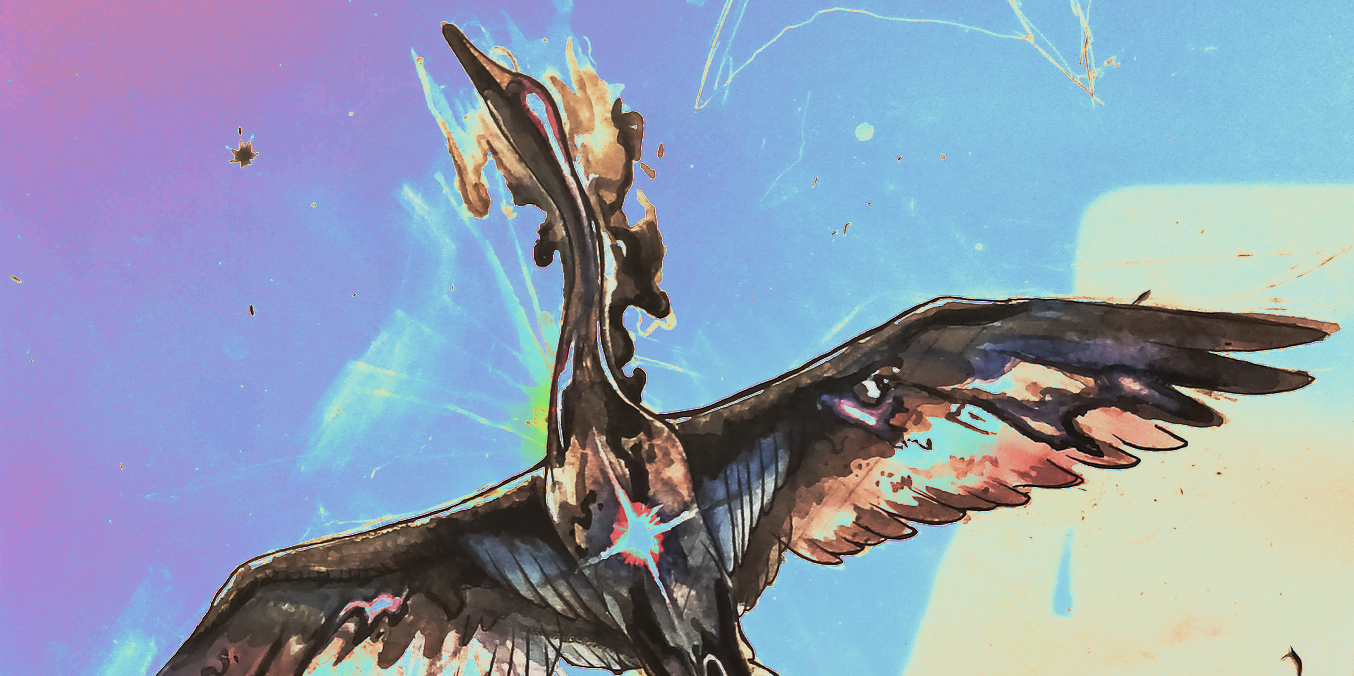
The above design was commissioned from tattoo artist Aoife Tierney and permanently marks the space over my heart. You can find a picture of the tattoo on my Instagram account.
Let us all remember a warm sunny day from our childhood. Lying careless in a green field, we look up through the canopy of a tree and see the leaves perfectly still in time. The wind is still. As the sun begins to set, we get back on our bike and head back home. During the trip, we can feel a breeze through our hair. The faster we cycle the stronger our hair flutters carelessly in this artificial wind. In this case, even though the air molecules have no effective direction with respect to a stationary observer, they have a distinct relative velocity with respect to a moving observer.
Blowing this analogy up to the galactic scales, one can replace the air molecules with a cloud of Dark Matter particles, and the bicycle with any vehicle that is in motion with respect to this effectively still cloud. As a result, any such moving object will experience a Dark Matter Wind originating from its relative direction of motion with respect to the stationary galactic plane.
Some of us may forget it sometimes, but we are flying through space in the most advanced “self sufficient” space vehicle in the known universe. Our planet is a mobile home, an arc drifting fast through a dark uninhabitable ocean. The direction in which the Earth is moving is defined by two distinct component motions; the Earth’s orbit around the Sun and the Sun’s obit around the galactic centre. By chance alignment, our Galactic orbital direction vector points toward the constellation Cygnus. As a result, an effective wind of Dark Matter particles originates from the direction occupied by Cygnus in the sky.
I do not claim to be a very focused individual. But when I need a source of inspiration for my research, I close my eyes and imagine that I’m back on that green field. But this time, I can see Cygnus through the canopy of the tree and tell myself that it’s a matter of time until the leaves start blowing in the Dark Matter wind.
ASTERISM
Cygnus (also known as the Northern Cross) was one of the 48 constellations recorded by the 2nd century astronomer Ptolemy, and represents one of the 88 modern constellations.
Deneb (Arabic dhaneb, meaning “tail,” from the phrase Dhanab ad-Dajājah) – α Cygni (Alpha Cygni)
The brightest star in Cygnus and the 19th brightest star on the night sky (60,000 times more luminous the Sun and 20 times heavier), Deneb is a blue-white supergiant located approximately 1,400 light-years away.
Albireo – β Cygni (Beta Cygni)
Even though Albireo appears to be a single star with the naked eye, it is composed of two distinct component stars. Whether the two stars form a binary (orbiting each other every 100,000 years) or an optical double (being completely unrelated and coincidentally appear as a pair) is not yet known.
Sadr (Arabic ṣadr, meaning “chest”) – γ Cygni (Gamma Cygni)
This yellow-white supergiant star is named for its position in the intersection of the Northern Cross as the chest of Cygnus. Located approximately 1,800 light years away, it is 12 times heavier than the Sun, 150 times larger in radius and emits 33,000 times as much energy.
Gienah (Arabic janāħ, meaning “the wing.”) – ε Cygni (Epsilon Cygni)
Ginah, located on the right wing of Cygnus is located approximately 73 light-years away is a mere 62 times more luminous than the Sun and 12 times larger in radius.
Rukh (a.k.a. Al al-Fawāris, meaning “the Riders”) – δ Cygni (Delta Cygni)
Stretching over the left wing of Cygnus, Rukh is located approximately 165 light-years away. As the stars move, in around 9,000 years and for a period of 400 years it will replace Polaris as the Earth’s a pole star.